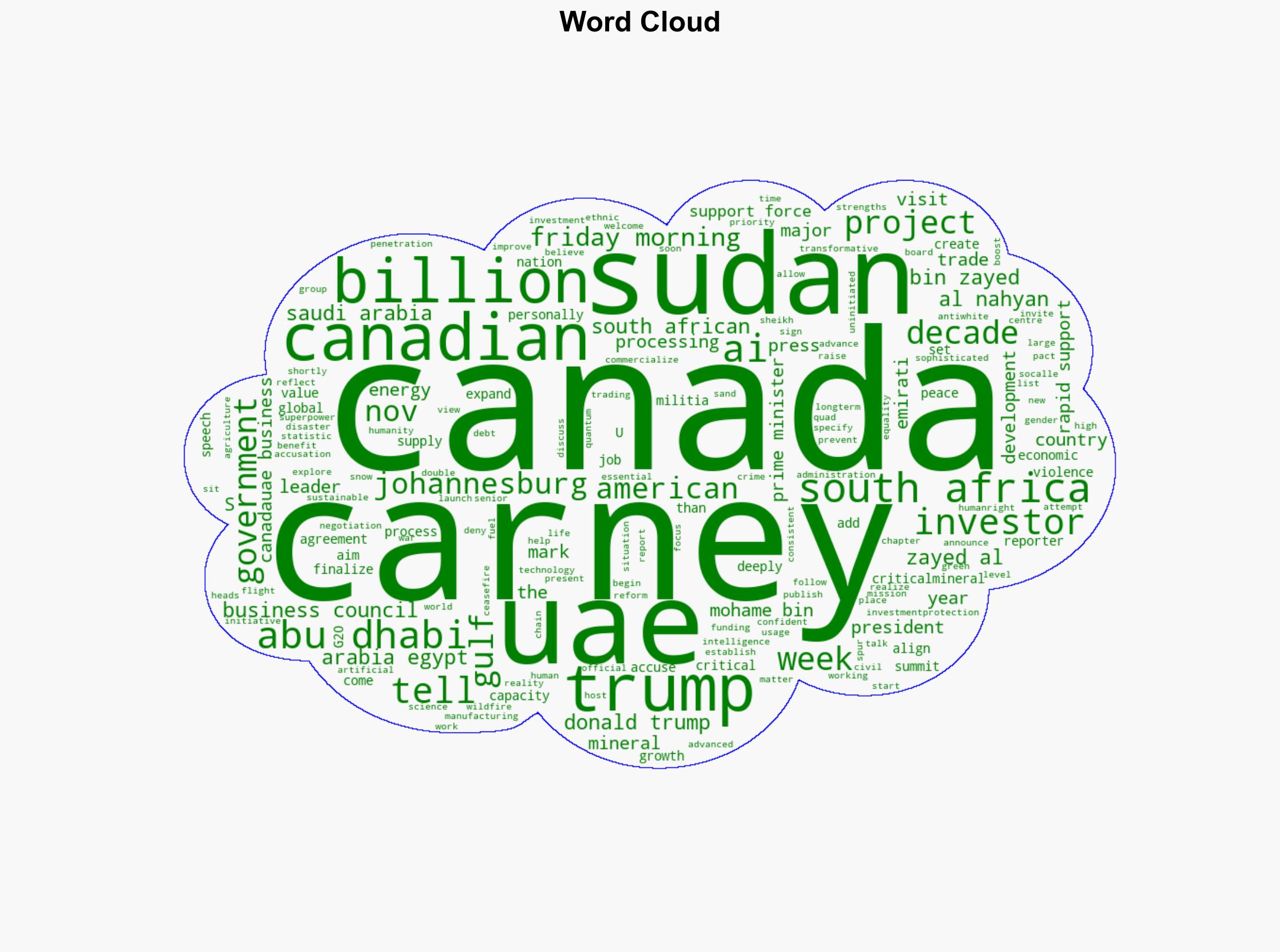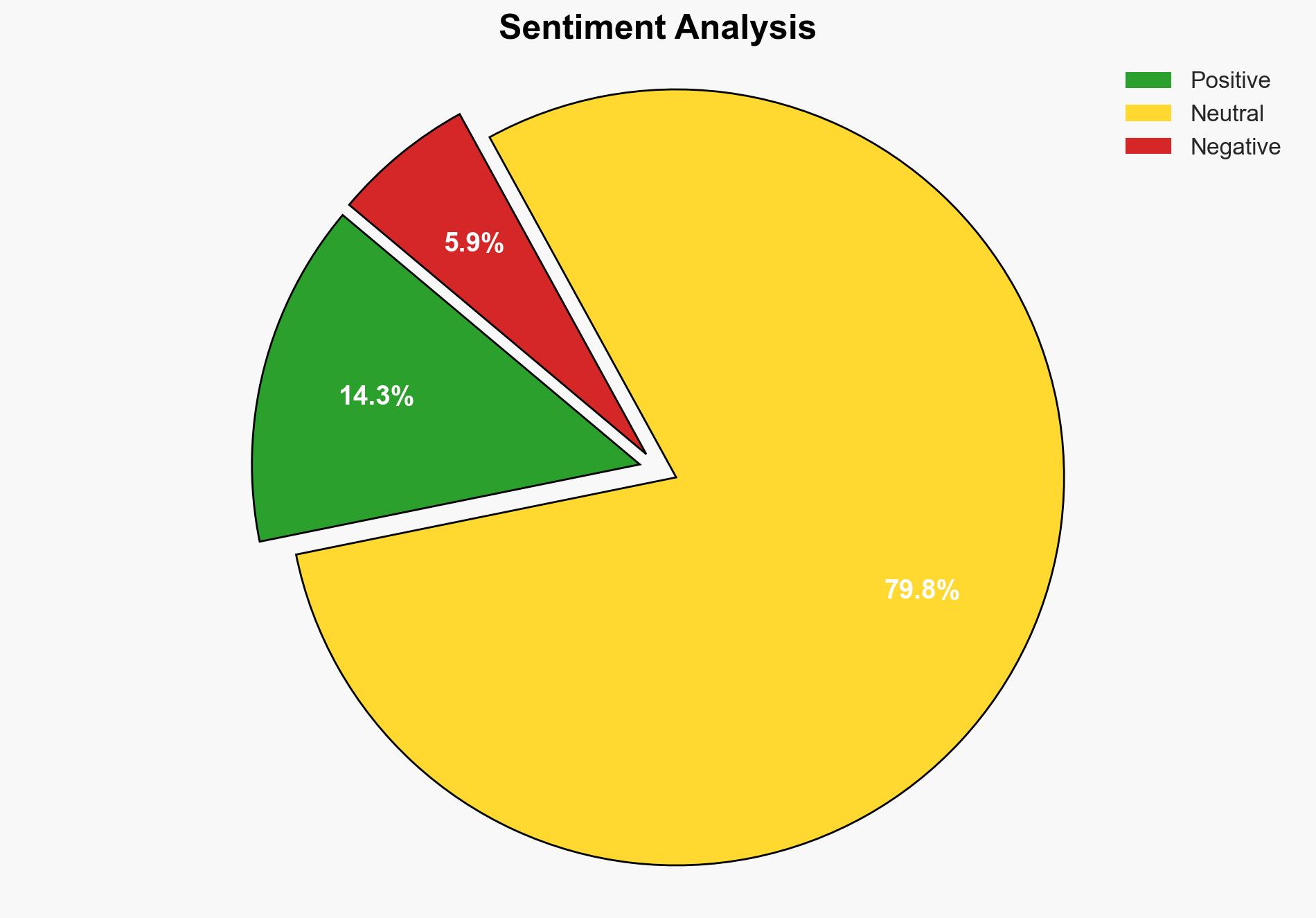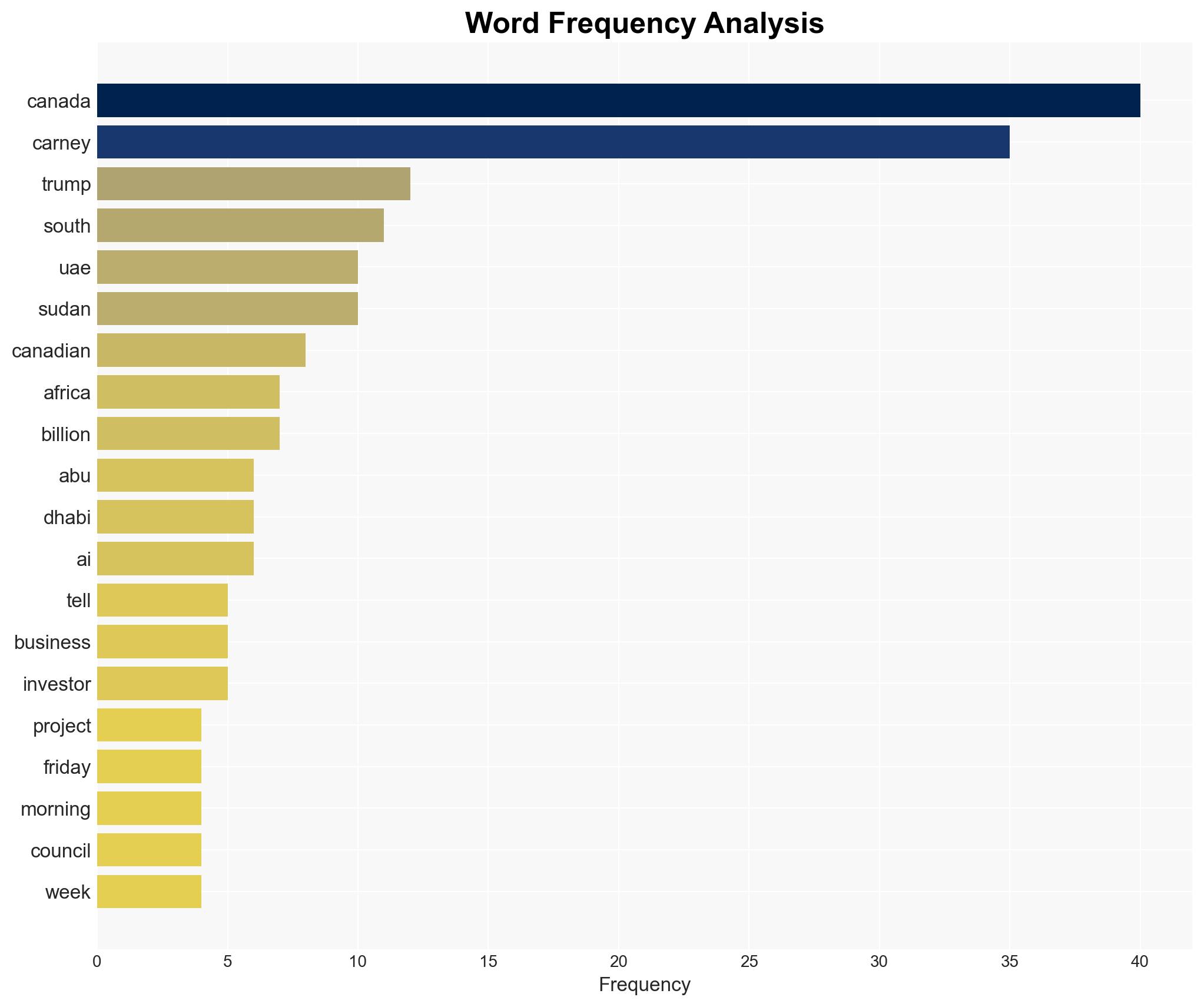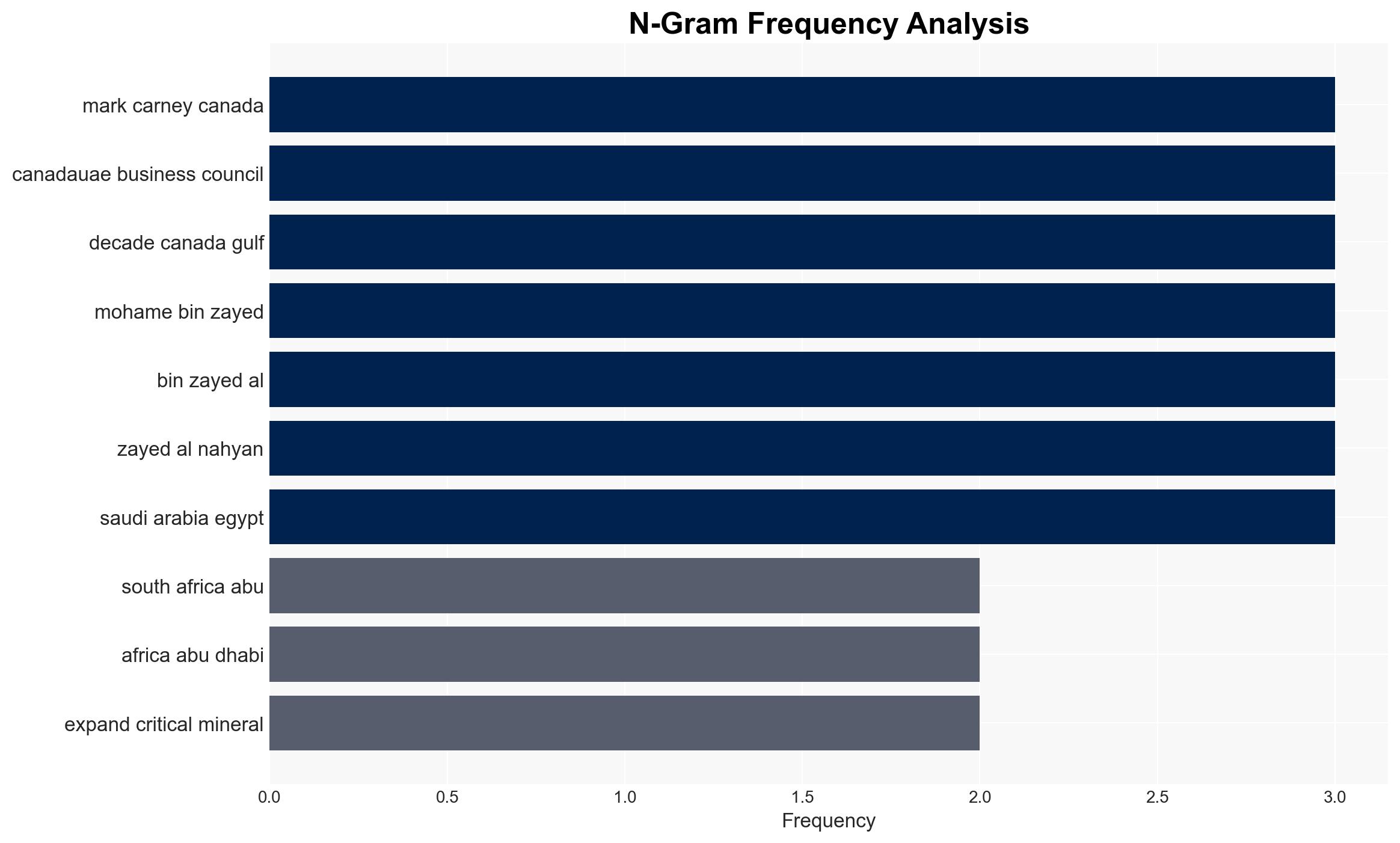Carney says 1B critical-mineral processing project coming heads to South Africa G20 – Financial Post
Published on: 2025-11-21
AI-powered OSINT brief from verified open sources. Automated NLP signal extraction with human verification. See our Methodology and Why WorldWideWatchers.
Intelligence Report: Strategic Analysis of Canada’s Critical-Mineral Processing Project Announcement
1. BLUF (Bottom Line Up Front)
With a moderate confidence level, the most supported hypothesis is that Canada’s announcement of a $1 billion critical-mineral processing project is primarily aimed at strengthening economic ties with the UAE and South Africa while positioning itself as a leader in critical mineral supply chains. Recommended action includes monitoring geopolitical reactions and preparing for potential economic and political shifts in the global critical minerals market.
2. Competing Hypotheses
Hypothesis 1: The project is a strategic move by Canada to enhance its critical-mineral processing capabilities, thereby securing a stronger position in the global supply chain for advanced manufacturing and energy technologies.
Hypothesis 2: The announcement is primarily a diplomatic and economic maneuver to deepen bilateral relations with the UAE and South Africa, leveraging the project as a tool for broader geopolitical influence and economic cooperation.
The first hypothesis is more likely given the global emphasis on critical minerals for technology and energy sectors, but the second hypothesis cannot be dismissed due to the timing and diplomatic context of the announcement.
3. Key Assumptions and Red Flags
Assumptions: It is assumed that the project will proceed as announced without significant delays or geopolitical disruptions. The economic benefits are assumed to be substantial enough to justify the investment.
Red Flags: Potential overstatement of economic benefits, lack of detailed project timelines, and geopolitical tensions that could affect bilateral relations.
Deception Indicators: The announcement’s timing around the G20 summit may suggest strategic positioning rather than immediate operational intent.
4. Implications and Strategic Risks
Political Risks: Potential backlash from other nations competing in the critical minerals market or those with vested interests in South Africa and the UAE.
Economic Risks: Volatility in critical mineral prices and supply chain disruptions could impact project viability.
Informational Risks: Misinformation or misinterpretation of the project’s scope and impact could influence public perception and investor confidence.
5. Recommendations and Outlook
- Actionable Steps: Establish a task force to monitor geopolitical developments and engage with stakeholders to ensure project alignment with national interests.
- Best Scenario: Successful project implementation leading to strengthened economic ties and enhanced global standing in critical minerals.
- Worst Scenario: Geopolitical tensions or economic downturns leading to project delays or cancellations.
- Most-likely Scenario: Gradual progress with periodic geopolitical and economic challenges requiring strategic adjustments.
6. Key Individuals and Entities
Mark Carney: Canadian Prime Minister involved in the announcement and diplomatic engagements.
Sheikh Mohamed bin Zayed Al Nahyan: UAE President, a key figure in bilateral relations.
7. Thematic Tags
National Security Threats, Economic Diplomacy, Critical Minerals, Geopolitical Strategy
Structured Analytic Techniques Applied
- Cognitive Bias Stress Test: Expose and correct potential biases in assessments through red-teaming and structured challenge.
- Bayesian Scenario Modeling: Use probabilistic forecasting for conflict trajectories or escalation likelihood.
- Network Influence Mapping: Map relationships between state and non-state actors for impact estimation.
Explore more:
National Security Threats Briefs ·
Daily Summary ·
Support us





